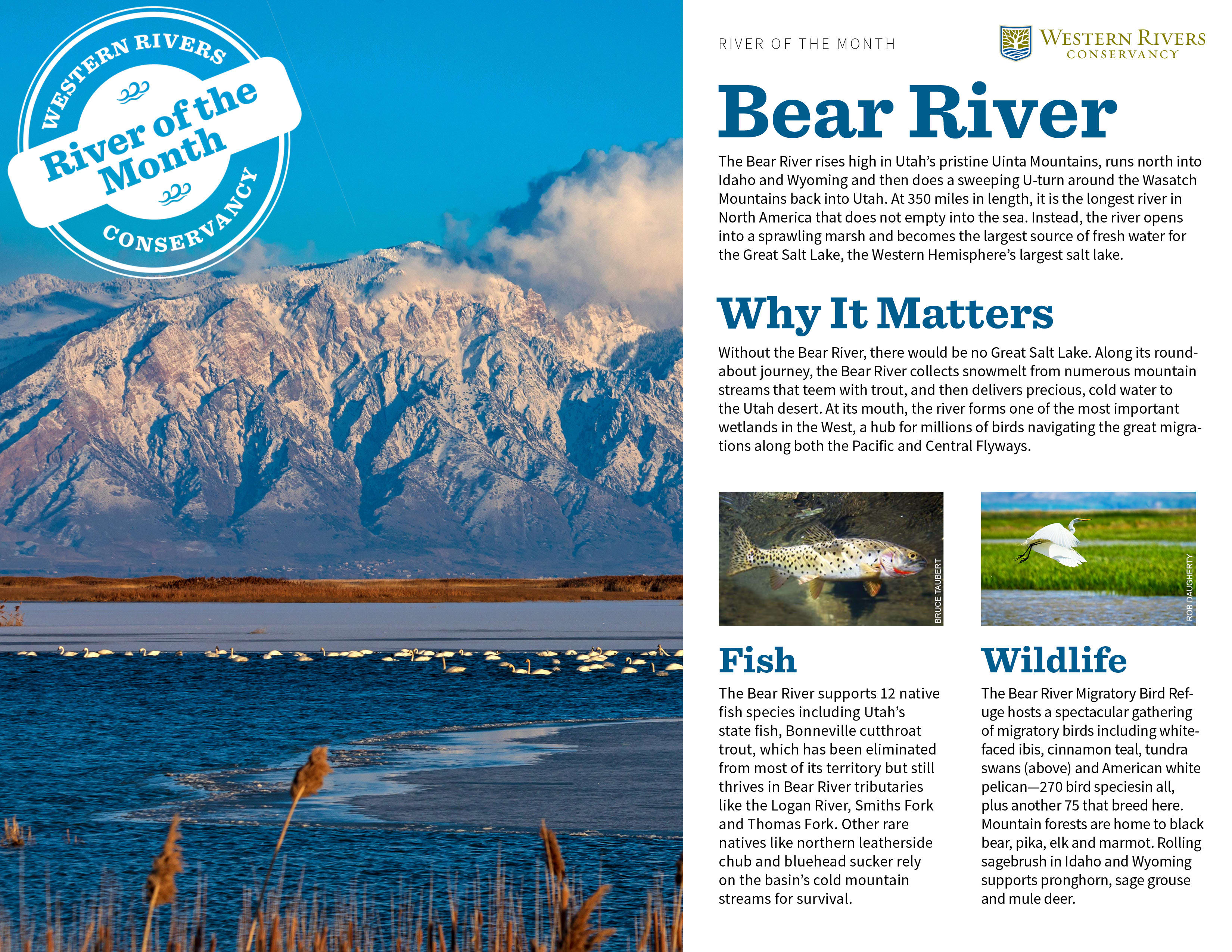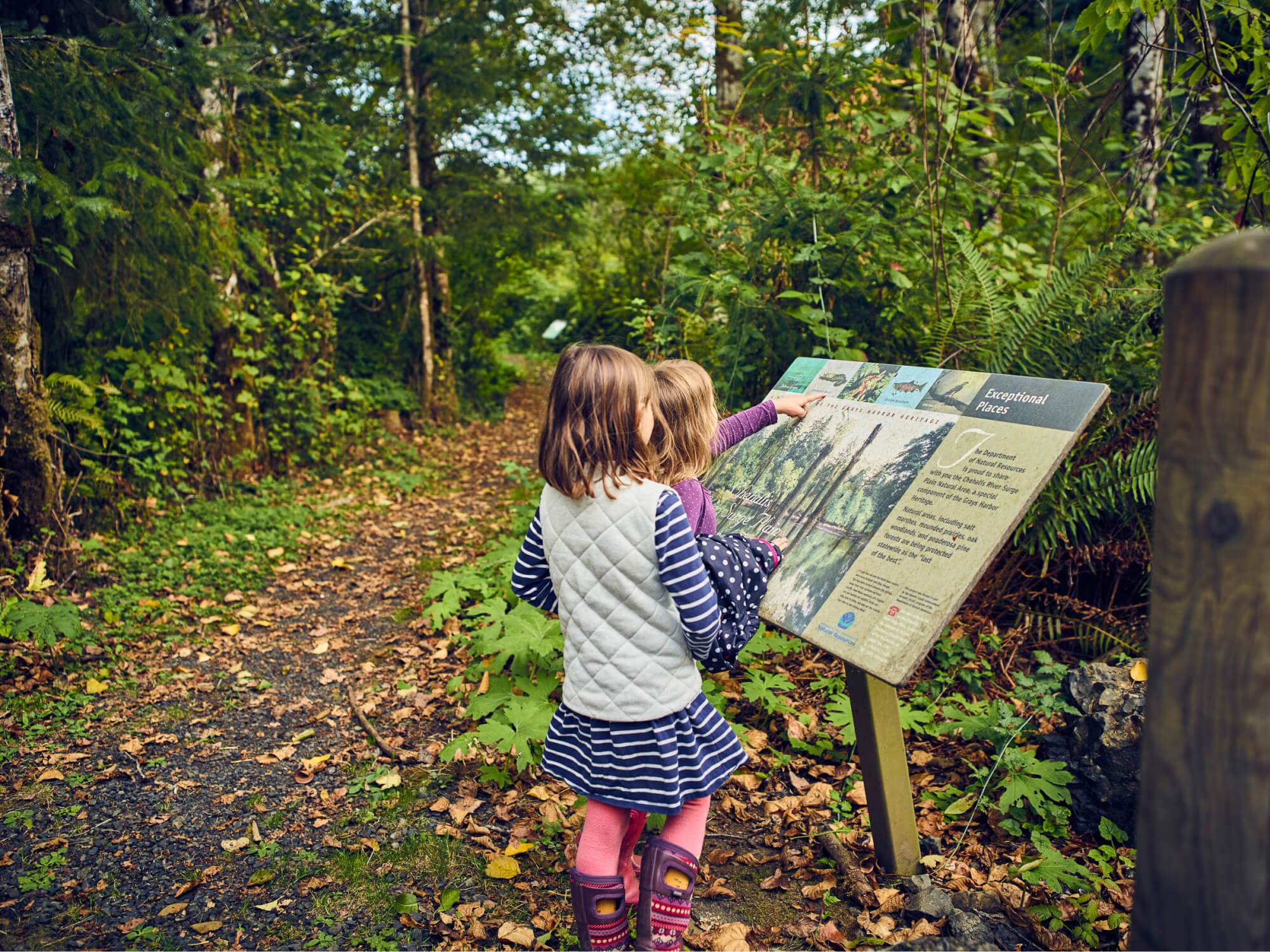
Fish
The Bear River supports 12 native fish species including Utah’s state fish, Bonneville cutthroat trout, which has been eliminated from most of its territory but still thrives in Bear River tributaries like the Logan River, Smiths Fork and Thomas Fork. Other rare natives like northern leatherside chub and bluehead sucker rely on the basin’s cold mountain streams for survival.

Wildlife
The Bear River Migratory Bird Refuge hosts a spectacular gathering of migratory birds including white-faced ibis, cinnamon teal, great egret (above) and American white pelican—270 bird speciesin all, plus another 75 that breed here. Mountain forests are home to black bear, pika, elk and marmot. Rolling sagebrush in Idaho and Wyoming supports pronghorn, sage grouse and mule deer.
-
Birding
Some of the best birding on Earth awaits visitors in the Bear River Migratory Bird Refuge. You can bird-watch year-round, and it’s best during the spring and fall migrations. Waterfowl peak in March and October and include tens of thousands of tundra swans, ducks and geese. You’ll also see white-faced ibis, black-necked stilt, Wilson’s phalarope, snowy plover and American avocet. Bring your bird list!
-
Hike
The Bear River Refuge is typically seen by a 12-mile auto loop. For hiking, head to the 55-mile Highline National Recreational Trail, which traverses the spine of the Bear River Range from the Utah border north to Soda Point, Idaho. Big elevation gains make for big views, sometimes clear to the Tetons.
-
Fish
Blue Ribbon trout waters abound in the Bear River basin, like the Logan River (especially the Blacksmith Fork), where big bugs produce plump browns and wild cutthroats, including a genetically distinct strain of Bear River cutthroats. Wyoming’s Smiths Fork is another splendid dry-fly destination beneath classic mountain scenery. Check regulations.
The WRC Story
Created in 1929, the Bear River Migratory Bird Refuge is a globally significant wetland complex that millions of birds depend on for survival. To expand the refuge and conserve vital marshlands adjacent to it, Western Rivers Conservancy protected two properties totaling more than 1,200 acres between 2008 and 2011. The properties feature open water and sheltered grasslands where an array of birds feed and nest, including ducks, geese, herons, tundra swan, American Pelican and black-necked stilts. With funding from the Land and Water Conservation Fund, we successfully added these critical marshlands to the 80,000-acre refuge. Located near the refuge entrance, the properties have also become an important part of the experience for tens of thousands of annual visitors.


Best Time of Year
- Birding
- Spring and fall
- Hiking
- Jun-Sep
Go Deeper
-
The History of the Bear River
(Utah Public Radio)
Learn More -
Guide to the Bear River MBR
(Visit Utah)
Learn More -
Park City’s Backyard: The eight best adventures in the Uintas
(The Outbound Collective)
Learn More


